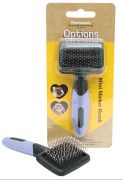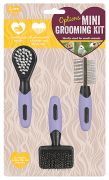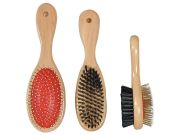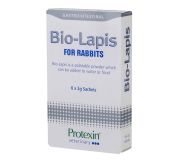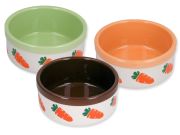Healthy Tips For Caring For Your Rabbit This Spring
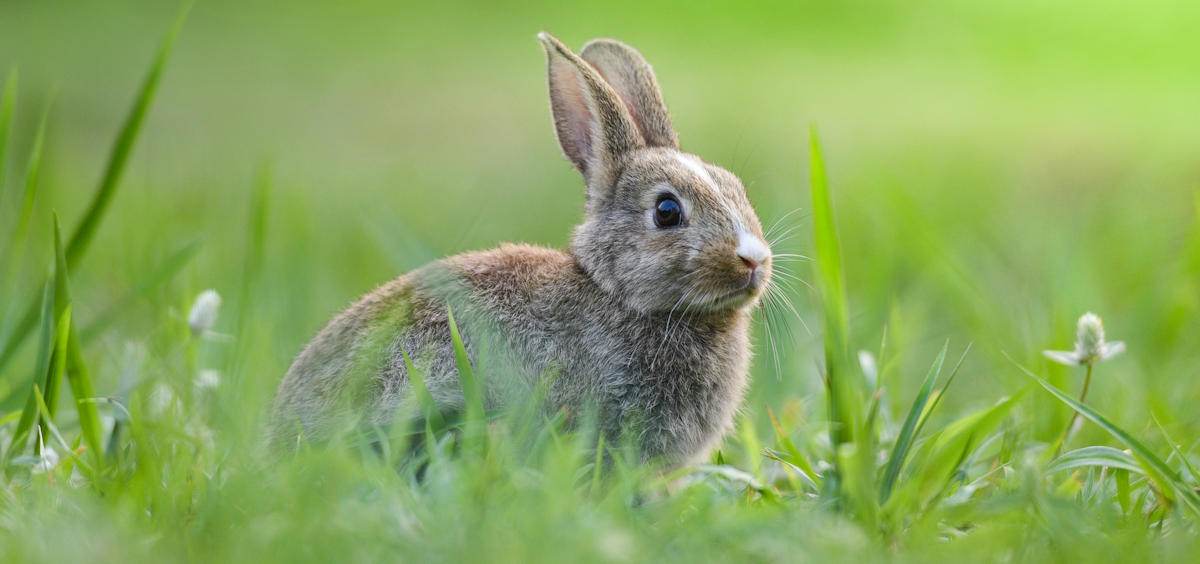
Spring can be a wonderful time of year, full of new life, sunshine and the hint of a lovely summer ahead. And the onset of spring seems to touch our little ones too. There’s moulting, ‘March Madness’, and a change in routine with the clock changes, to name just a few.
But for now, we’re going to focus on digestion. Every year, around the start of spring, we see an increase in requests for help with eating and pooping issues. As many rabbit owners know, a digestive issue is always serious, and prompt action is needed to prevent the issue becoming a severe health crisis. Better yet is to do all one can to prevent issues from arising in the first place.
There are two main factors that can really mess with a bunny’s digestive system during the onset of spring.
Spring Issue 1 – Moulting!
The first is moulting. Spring usually comes with a fairly swift change in temperature - and can then flit from warm and sunny to really cold again in a very short space of time. The winter-to-spring moult is usually the most significant moult of the year, and it can be a big one - especially if the winter has been very cold, and spring arrives quickly.
Moulting is a natural process where the thick, longer and downy winter coat keeping the animal warm during the cold winter months is shed to allow for the growth of shorter, cooler fur for the hotter summer months.
Spotting the Moult
It’s usually easy to spot when a rabbit starts to moult, as they can have a V shaped pattern on the fur on their head. This ‘V’ line then moves slowly back, down the body of the rabbit until the ‘skirt’ area is reached where the full moult is completed.
And, of course, sometimes the moult happens in different areas at the same time, making the rabbit look as though they really are having a bad hair day!
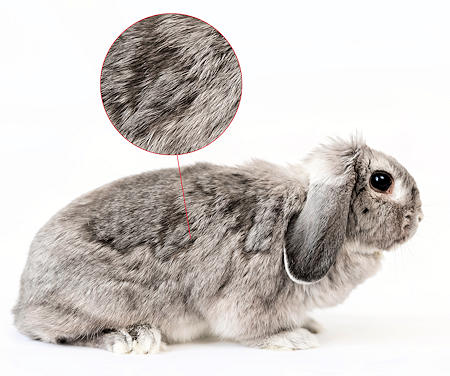
This rabbit is having a bad hair day!
The loose fur is usually removed by grooming, and by moving around…and by lying on your lovely couch for a while leaving behind a furry bunny outline!
Another sign of a rabbit moulting is what is often referred to as a ‘string of pearls’. This is where individual poos are linked by ingested fur. Pretty(!)
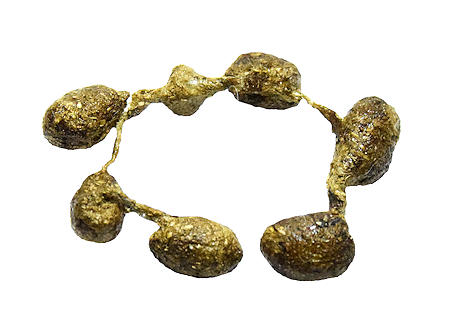
The String of Pearls Rabbit Poo!
Helping the Moulting Process
There are a number of things us owners can do to help the moulting process. The first is to increase the grooming regime - some rabbits just love to be groomed, whereas others will only tolerate it if there is the likelihood of a tasty treat, or if they don’t actually realise they are being groomed! A lot of loose fur can be teased out by hand during a petting session, and with no comb or brush in sight, the rabbit is often none the wiser!
A grooming mitt can be useful here, but again, some rabbits will treat a grooming mitt as ‘stranger danger’.
Sometimes very fine loose fur can be helped out with a slightly moist hand - but we’re not talking wet here! Just enough dampness to help the fur attach to the hand rather than wetting the fur.
There are many different types of combs and brushes on the market, and some ‘eliminators’ that are reputed to remove all loose fur. It’s often a case of trying several different methods to find what works for you and yours - there are so many different fur types, and rabbit temperaments!
The Rabbit Welfare Association also has some good moulting advice, which can be found from here.
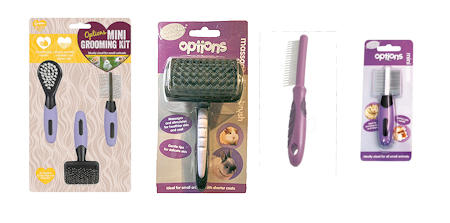
We stock a variety of rabbit, guinea pig and small animal brushes and combs
Hay .... Fibre!
The next most important thing an owner can do to help with moulting is to ensure the rabbit is eating enough fibre; fibre helps the fur to be passed through the digestive system, and the more fibre there is, the less likely the fur is to get stuck and cause a block (which is very serious).
Making sure the portion control is optimised and diet balanced will help, as will providing lots of high fibre tasty herbs and forage - rummaging around and keeping active will also help gut motility and digestive function!
A rabbit should eat at least a pile of hay the same size as themselves every day, which equates to around 85% of the daily rabbit food intake as hay. This hay should be good quality and refreshed daily. It is less important whether this hay is timothy or mixed meadow hay, as the most important factor is the amount eaten. We always recommend feeding two or three different types for variety, and to ensure there's always enjoyable hay to hand should one become unavailable as a result of a poor harvest.
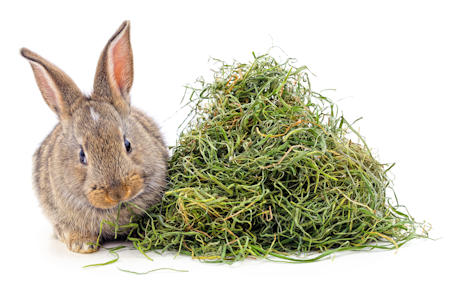
Rabbits should eat a pile of hay a day!
If your little ones are reluctant hay eaters, do give us a call as we may be able to help!
Hydrate!
Going hand in hand with optimised fibre intake is ensuring your little ones are drinking enough water; a lower intake of fluid can exacerbate or trigger a digestive issue, as gut motility may be slower, so increasing the possibility of a blockage.
Again, we are happy to help with advice regarding hydration, and the first step would be to look at how that water is made available.
Daily fresh water is a must, as water is essential to life, and stale or dirty water can reduce the amount being consumed, which, in turn, will affect digestive health and overall wellbeing.
Bottles or Bowls?
How the water is offered can also make a considerable difference too. Whilst bottles are often convenient and helpful in keeping the water free from debris, a bottle won’t have much impact on freshness, and can sometimes be difficult to drink from.
By design, bottles are made to be leak-proof; this is usually achieved by creating a small vacuum in the bottle once some water has escaped, or by the use of a valve that must be moved to create some flow. In both instances, the design can reduce access to water or make drinking a bit of an effort!
A study carried out in 2011 regarding the preference of rabbits for drinking from open dishes versus nipple drinkers (see citation, below) showed that rabbits were able to drink 3 or 4 times quicker from a bowl than from a bottle. The author also noted that there was an overall reduced food and water intake if access to water had been prevented for just a few hours, even when the water was returned.
This study was further reviewed by Frances Harcourt-Brown in the same year (see citation below), who noted a link between low water intake and the increased risk of urinary tract infections, amongst other health issues.
Sometimes it is difficult to provide a bowl as the only drinking vessel. Small animals can be destructive and tip over bowls, be very active and knock over bowls, use them as a toilet (!) or bury them in a mountain of hay. Some of our little ones are not quite as house-proud as they might be!
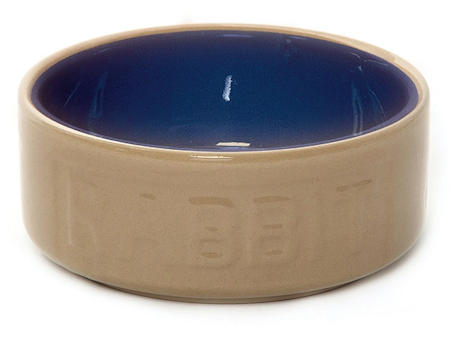
We stock a number of heavy rabbit bowls
There are a variety of bowls available, and we stock the heavier bowls that are less easy to knock over. Depending on your little ones accommodation, it may be possible to create a bowl holder to offer a bit more stability, or one that attaches to a cage.
So in order to ensure good hydration, we recommend:
- Fresh water at least daily. Check several times daily to ensure it is still clean and is topped up.
- Use a bowl or dish rather than a bottle, where possible to maximise hydration. Using a heavy ceramic bowl will reduce instances of tipping. Ensure the bowl holds more than the rabbit(s) drink in a day, and use a wall/floor fixing/holder where needed for added stability.
- If a bottle has to be used, select one with a good volume, with nozzle that both does not leak, but also allows easy flow of water. Ideally use in addition to a bowl in case the nozzle fails or effort required to get a reasonable quantity of water is too much.
- Putting a bowl underneath a bottle can be a good option; the bowl will catch any drips and also provide an easy-to-use option too.
Sometimes a tiny splash of something tasty will help consumption, such as non-sweetened fruit juice or something like Bio Lapis (dandelion flavour) as this may increase drinking just because it tastes nice. If this is needed, we recommend offering in addition to plain water (rather than instead of) to ensure all the bases are covered! We don’t however, recommend this as a daily option – only when consumption is troublesome.
Spring Issue Number 2 – New Grass!
The second spring related issue is the sudden availability of really yummy, young, tasty fresh grass. It’s so succulent and lovely at this time of year, but if your little ones digestive system isn’t ready for it, this rich, vibrant grass can cause upset, and in some cases even bad diarrhoea..
So whilst fresh grass is perfectly fine, natural and healthy and can (and should!) be fed to your little ones (as long as it’s sourced from a clean area away from the possibility of other animal poo, car exhaust contamination etc), we recommend it be introduced very slowly at the start of each year, to allow for the digestive system to become accustomed to the new seasons’ growth - this is where the gut micro flora adapt to the ‘new food’ so it can be digested optimally.
Fresh grass is what Mother Nature intended rabbits to eat, and they do enjoy it so, but introduce it slowly, over a few weeks, to ensure there is no tummy upset.
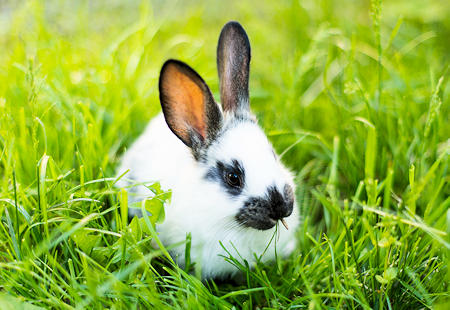
New spring grass is always a favourite!
If you’re short on grass, or don’t have a garden, but would like to feed it, fresh grass grows easily in trays and pots, so if you have access to sunshine (i.e windowsill!) you can grow your own grass. There are many companies selling grass seed, so look out for timothy or rye grass seeds - either will really be enjoyed! And if you’re feeling bold, oat or wheat grass are very tasty too!
Our top tip for growing and feeding tray grass:
Put some chicken wire over the top of the tray and allow your little ones to harvest the grass themselves - they’ll only be able to eat down to the chicken wire, so the grass roots will be safe and can grow again. If you’ve prepared a few trays, you can rotate them to ensure the availability of fresh grass for longer.
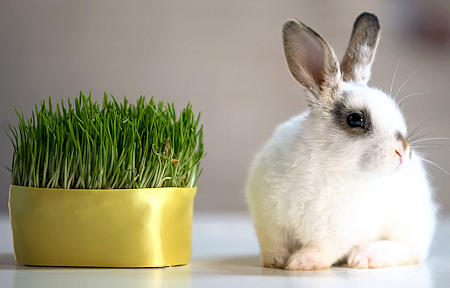
Growing grasses in pots is a great way of providing fresh grass - for free!
Whilst it may be tempting, never feed grass clippings after a lawn has been mown. These clippings will begin to ferment as soon as the grass is cut, due to the nature of the lawn-mover blade, and this fermentation will cause a digestive upset. As daft as it sounds, use sharp scissors when harvesting grass for your little ones. Your neighbours may laugh, but hey….and it’s good to help people smile!
And If Things Do Go Wrong..
If you do suspect your little one has a digestive issue, contact your vet as a matter of urgency. Issues can quickly become serious so the quicker treatment can be given, the better.
Signs of digestive issues include:
- Not eating
- Hunching (tummy ache)
- Very stringy poo
- Grinding teeth (a sign of extreme pain)
- Diarrhoea
- Lethargy
- Change in normal behaviour or routine
And Finally …
Spring is a lovely time for rabbits and other small animals - the onset of fresh grass, sunshine and the promise of warm weather means an increase in activity and joy. With a focus on diet and a few simple preventative measures, the risk of digestive issues can be minimised, and hopefully avoided all together!
|
Key Points For Caring For Your Rabbit This Spring:
|
Further Reading - Links and Citations:
Further Moulting Information: https://rabbitwelfare.co.uk/rabbit-care-advice/maintenance-handling/moulting/
Harcourt-Brown, F. (2011), Importance of water intake in rabbits. Veterinary Record, 168: 185-186. https://doi.org/10.1136/vr.d964
Tschudin, A., Clauss, M., Codron, D. and Hatt, J.-M. (2011), Preference of rabbits for drinking from open dishes versus nipple drinkers. Veterinary Record, 168: 190-190. https://doi.org/10.1136/vr.c6150


